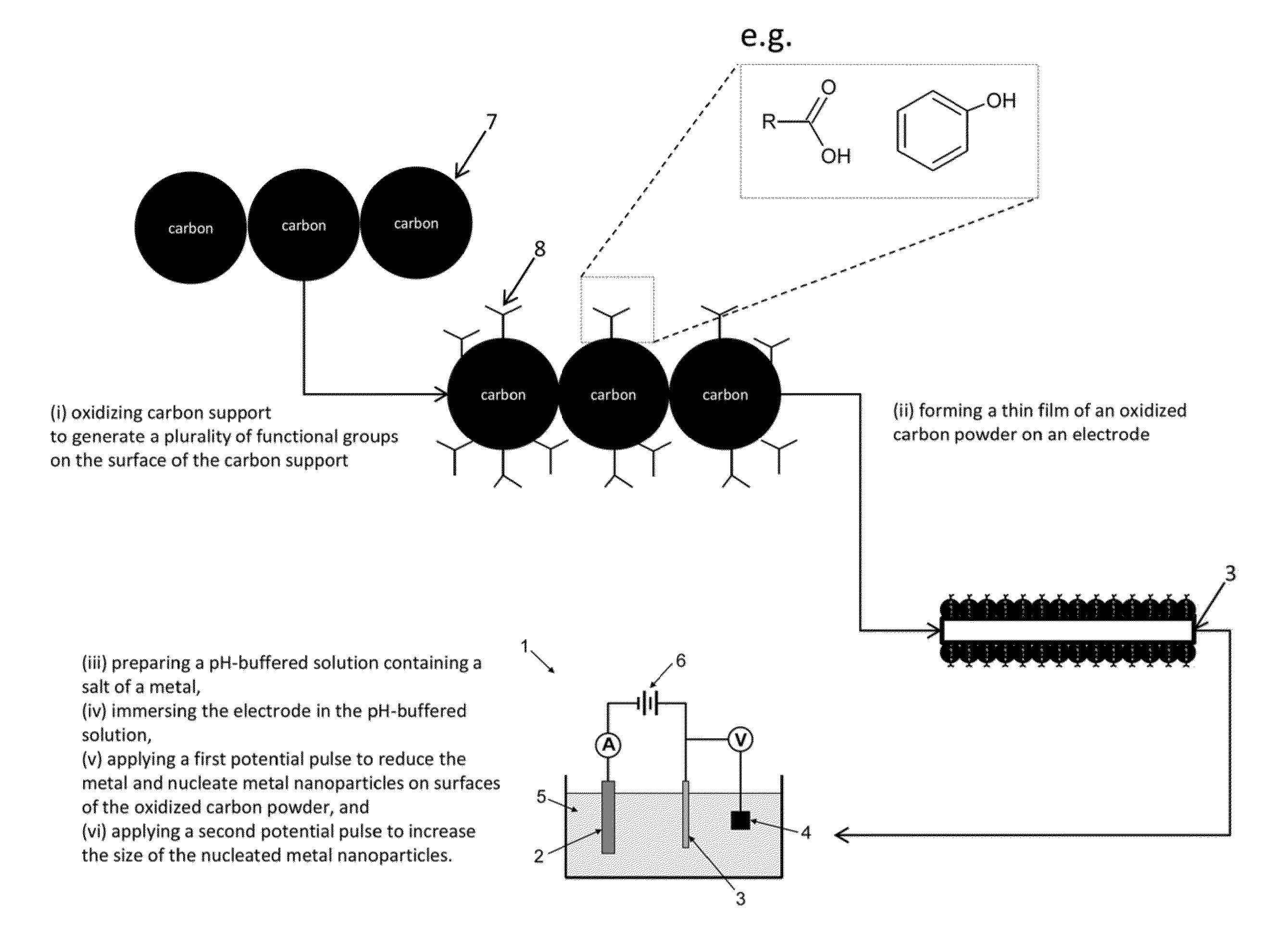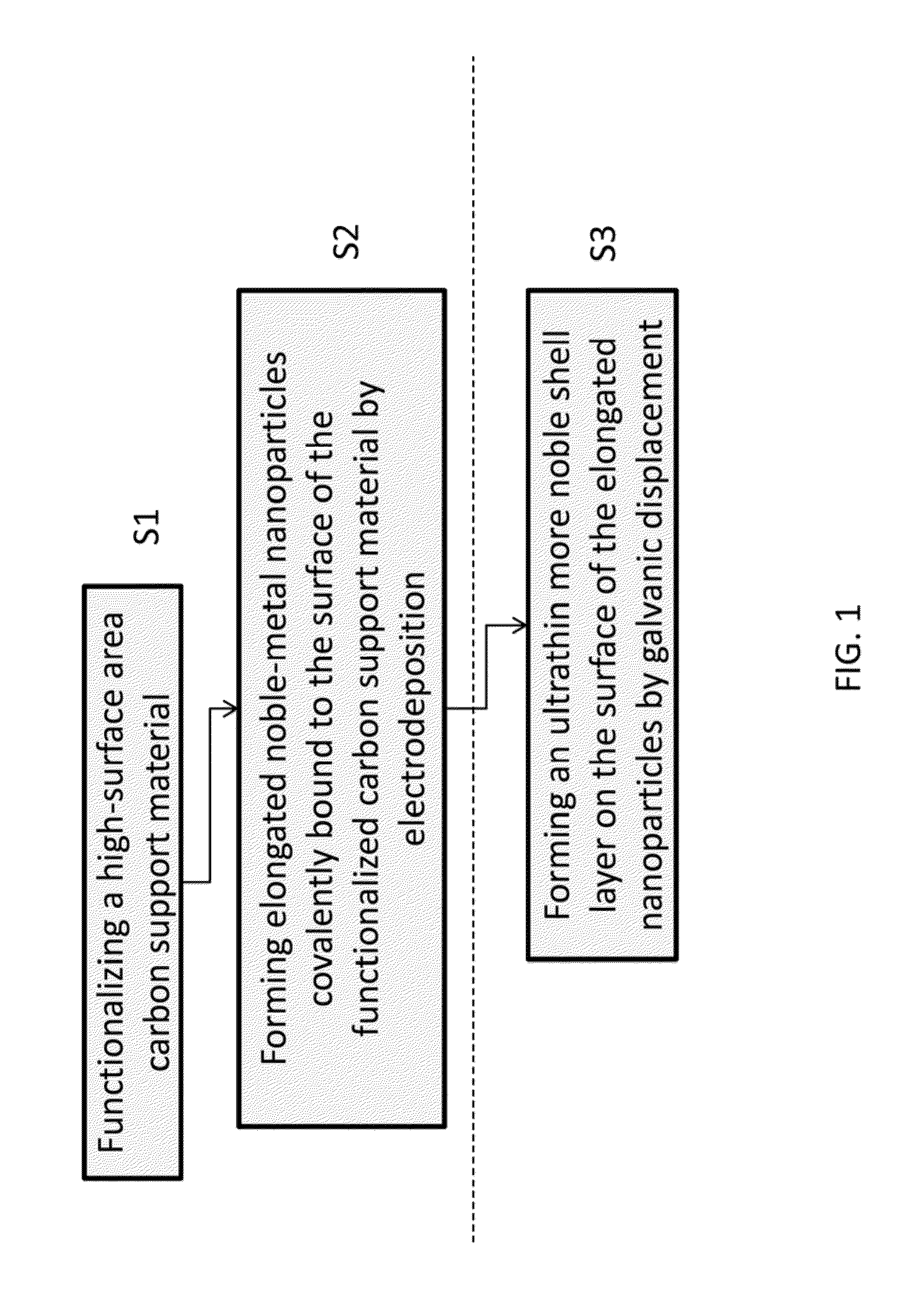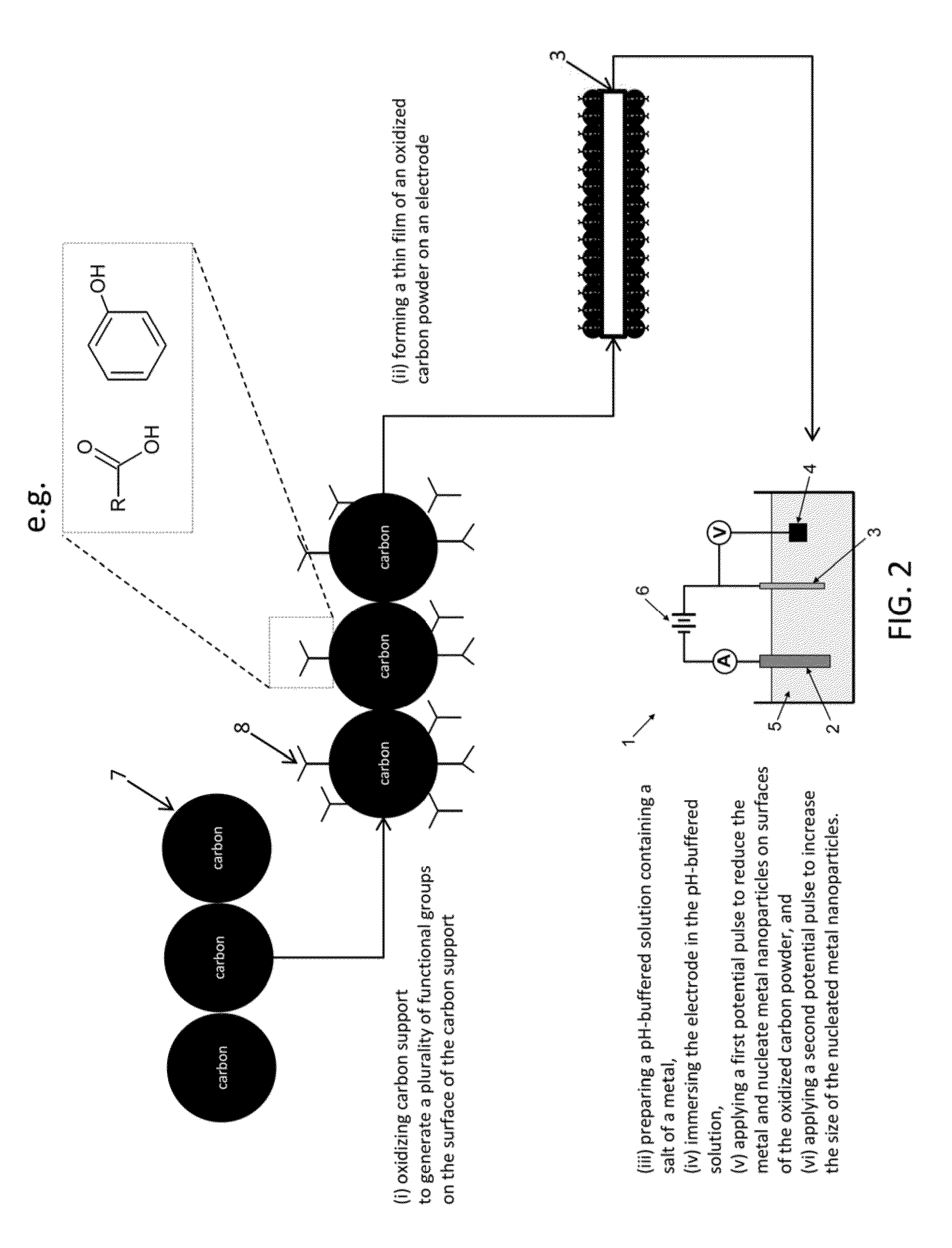Electrochemical Synthesis of Elongated Noble Metal Nanoparticles, such as Nanowires and Nanorods, on High-Surface Area Carbon Supports
a carbon nanoparticle, high-surface area technology, applied in the field of nanoparticles, can solve the problems of increasing both the number of processing steps and the overall cost, reducing the catalytic activity of particles, and affecting the stability of the carbon nanoparticle, so as to maximize the catalytically active surface area, improve stability, and improve the effect of stability
- Summary
- Abstract
- Description
- Claims
- Application Information
AI Technical Summary
Benefits of technology
Problems solved by technology
Method used
Image
Examples
Embodiment Construction
[0025]The generalized process for forming elongated nanoparticles according to the disclosed method is described by the flowchart shown in FIG. 1. The method not only provides a deposition process that takes minutes in comparison with hours or days in comparable chemical routes, but also does not require the use of capping agents, surfactants, or other organic compounds to facilitate a heightened catalytic activity. Surfactants have generally been used to control the particle size and to attain a higher particle yield. However, the inclusion of an organic material during particle synthesis significantly lowers the catalytic activity of the particles. Removal of the organic material using Prior Art techniques requires the use of additional washing and / or heating processes which increase both the number of processing steps and the overall cost. Furthermore, even with the appropriate cleaning steps, a residual organic layer typically remains on the surfaces of the nanoparticles. Finall...
PUM
| Property | Measurement | Unit |
|---|---|---|
| diameter | aaaaa | aaaaa |
| size | aaaaa | aaaaa |
| diameter | aaaaa | aaaaa |
Abstract
Description
Claims
Application Information
 Login to View More
Login to View More - R&D
- Intellectual Property
- Life Sciences
- Materials
- Tech Scout
- Unparalleled Data Quality
- Higher Quality Content
- 60% Fewer Hallucinations
Browse by: Latest US Patents, China's latest patents, Technical Efficacy Thesaurus, Application Domain, Technology Topic, Popular Technical Reports.
© 2025 PatSnap. All rights reserved.Legal|Privacy policy|Modern Slavery Act Transparency Statement|Sitemap|About US| Contact US: help@patsnap.com



